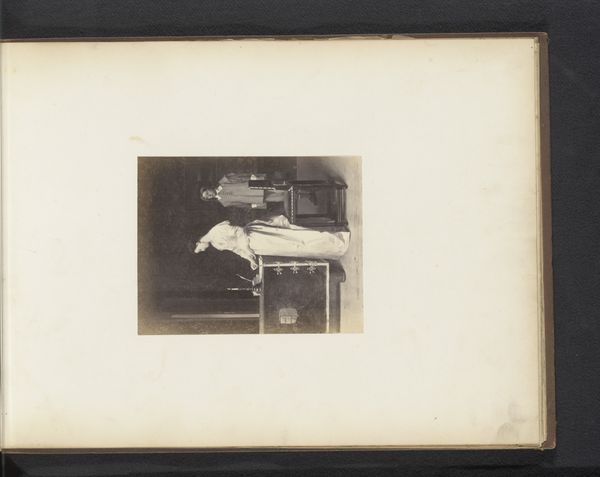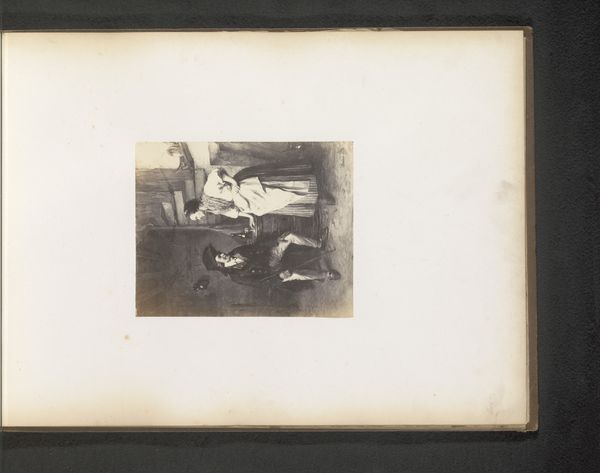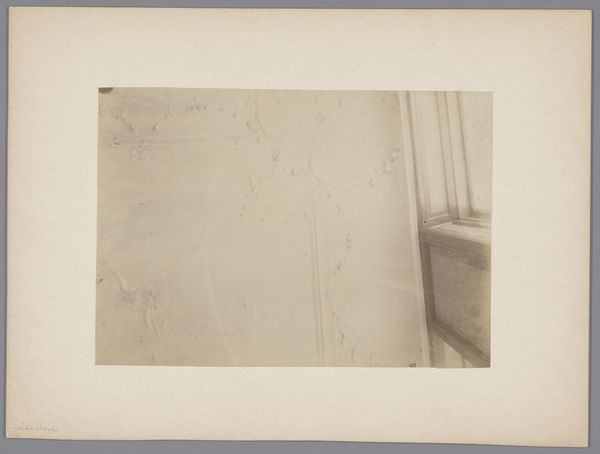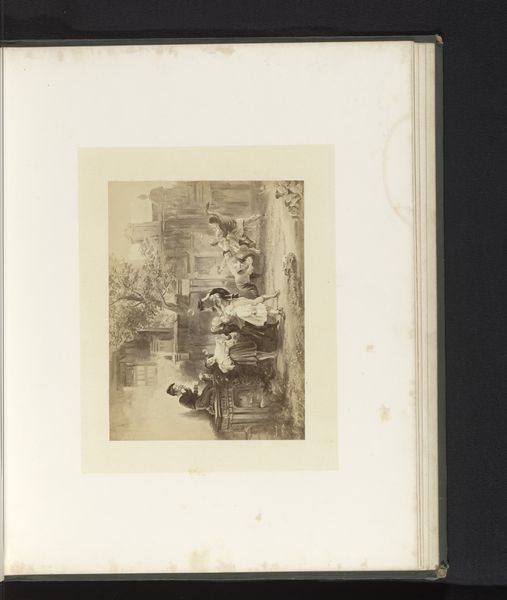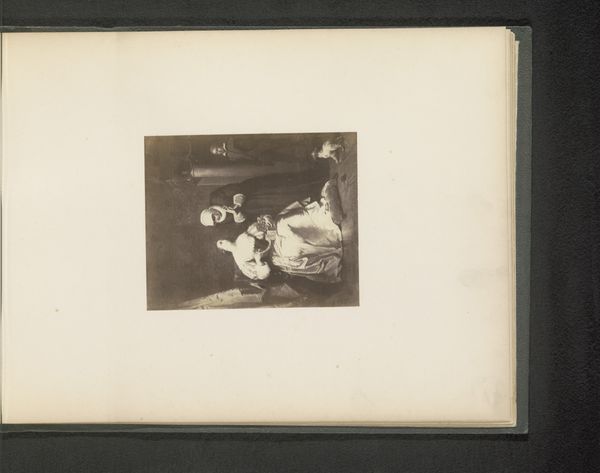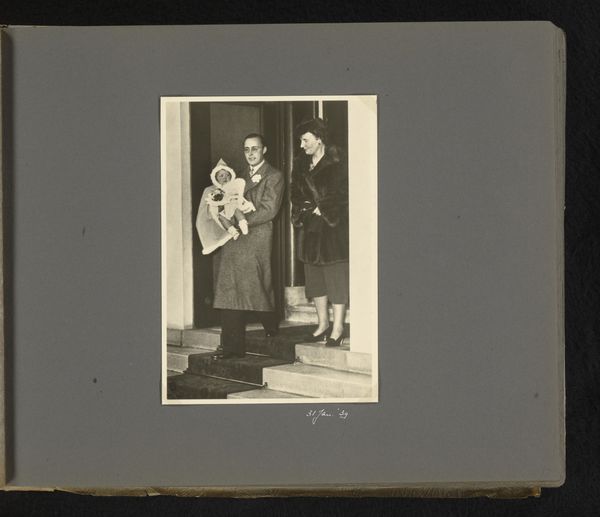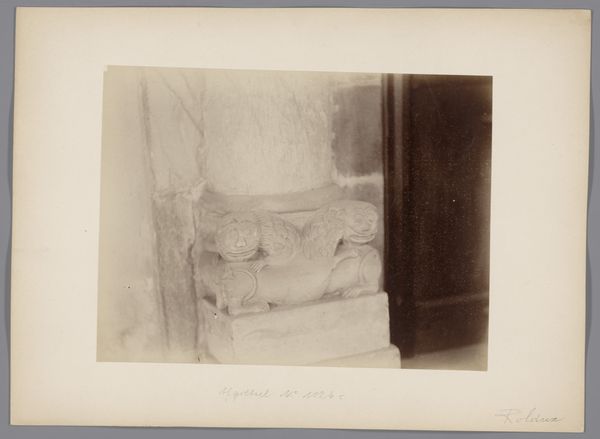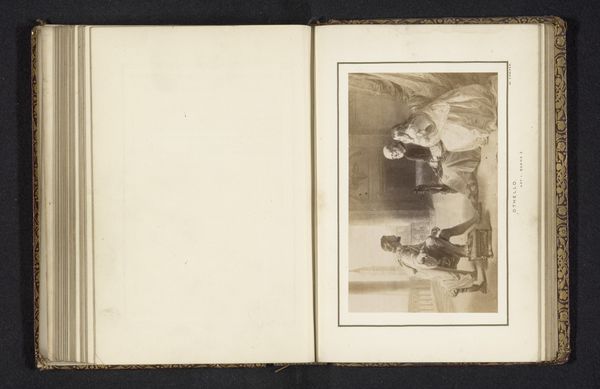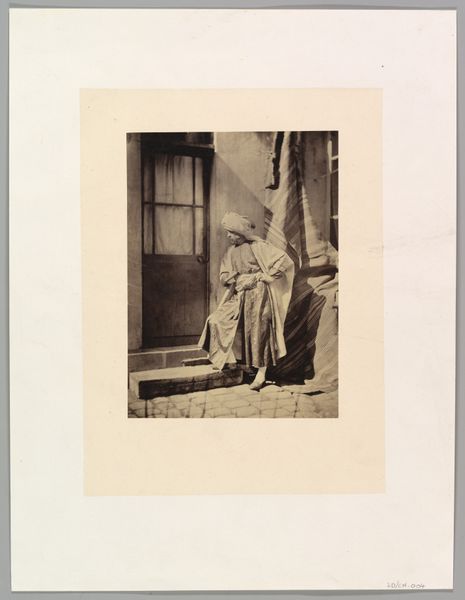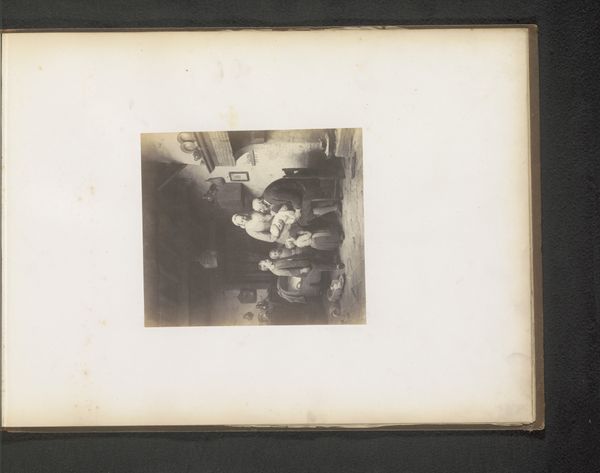
Dimensions: height 235 mm, width 175 mm
Copyright: Rijks Museum: Open Domain
The Grave Monument of Reinoud van Brederode in the Grote Kerk at Vianen was likely made from white marble in the late 16th or early 17th century. Marble is a metamorphic rock, prized for its durability, workability, and association with classical antiquity. The process of creating a monument like this began with quarrying the stone, a labor-intensive undertaking. Skilled artisans would then carve the marble, using a variety of tools to achieve intricate details and lifelike figures. The monument's surface would have been polished to a high sheen, enhancing the stone's natural beauty. The whiteness of the marble would be associated with purity and divinity, and would signal the high social status of the commemorated individual, Reinoud van Brederode. Consider, as you look at the monument, the immense amount of time and expertise required to create this object, and the way this skilled labor elevated both the material, and the man for whom it was made. It exemplifies how the processes of craft imbue an artwork with significant cultural meaning.
Comments
No comments
Be the first to comment and join the conversation on the ultimate creative platform.
